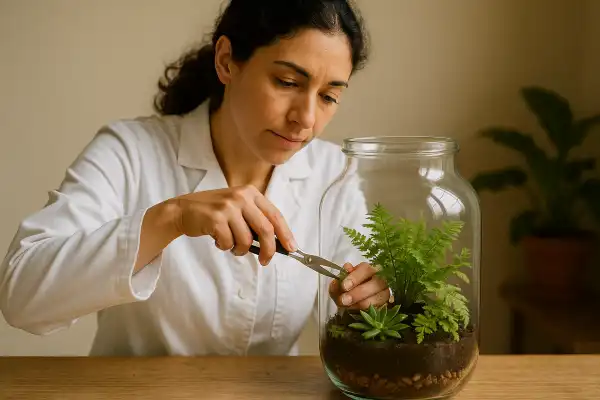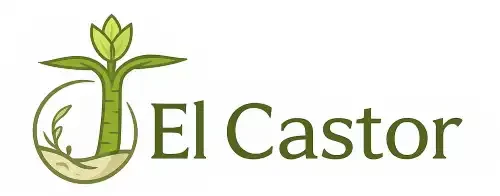Many terrarium enthusiasts find themselves staring at their glass gardens, wondering when the right moment arrives to take scissors to their beloved miniature ecosystems. This question surfaces regularly in my workshop conversations and online forums—and for good reason. So when to prune terrarium plants?
Creating a thriving terrarium involves understanding the delicate balance between growth and containment. Unlike traditional houseplants with unlimited space to sprawl, terrarium plants exist in a carefully curated world where timing your pruning decisions can mean the difference between a flourishing micro-environment and an overcrowded chaos.
When to prune terrarium plants?
The optimal time to prune terrarium plants is during their active growth periods, typically in spring and summer, when plants recover and grow back more vigorously. However, the specific timing depends more on observable plant behaviors than calendar dates.

Recognizing the visual cues for pruning
The most obvious indicator that pruning time has arrived is when you notice a plant beginning to press against the terrarium’s sides or lid. This physical contact creates several problems beyond simple aesthetics. When leaves constantly touch the side glass, which is often wet from condensation, the chance of mold infection becomes quite high.
Overcrowding presents another clear signal—when plants are competing for space and light, it’s time to thin them out. You’ll notice this when certain plants begin dominating the terrarium space, casting shadows over smaller companions or when foliage becomes so dense that air circulation suffers.
Leggy growth also demands attention—if you notice your plants stretching toward the light source, it’s a sign that they need a trim to encourage more compact growth. This elongated growth pattern typically occurs when plants compete for available light within the enclosed environment.
Seasonal considerations and growth patterns
While spring and summer represent the ideal pruning window for most terrarium plants, the closed ecosystem creates unique conditions that sometimes override traditional seasonal guidelines. Succulents tend to grow slowly and often only during the summer or winter—and then they tend to stay the same size during other seasons.
Depending on the species, size and exposure of the terrarium, maintenance including pruning is required one to three times a year. The frequency largely depends on the growth rate of your specific plant varieties and the size of your container.
Immediate pruning situations
Certain circumstances demand immediate pruning regardless of season. Promptly remove any leaves showing signs of disease or damage to prevent the spread of issues to other plants. If your leaf is already damaged it is best to prune that leaf off to prevent it decaying as it will leave a rotten type scent in the garden.
When you notice plants growing too tall, open the lid and prune the stems a couple leaves down to allow your plant some more growth space. The key technique involves cutting just below the point where the leaf is growing from called the “node”.
Establishing timing for new terrariums
If you’ve recently added or repotted plants in your terrarium, give them a few weeks to establish before pruning. This settling-in period allows plants to adapt to their new environment and develop stable root systems before experiencing the stress of trimming.
A terrarium takes an average of two weeks to reach equilibrium. During this adaptation phase, focus on monitoring rather than intervening, allowing the ecosystem to find its natural balance.
Environmental factors that influence timing
Temperature and humidity levels within your terrarium can accelerate or slow plant growth, affecting pruning schedules. Mould occurs from small spores or over humidity and cannot always be avoided but we can reduce it through air, less watering and less hot room conditions above 21°C.
Monitor your terrarium’s microclimate closely. If you notice excessive condensation or temperature fluctuations, these conditions can trigger faster growth periods that may require more frequent pruning interventions.
Tools and preparation timing
Use clean, sharp scissors or pruning shears for clean cuts. This prevents damage to the plants and reduces the risk of disease. A terrarium tool kit will go a long way to helping you effectively prune a terrarium. Use the tweezers to hold a stem in place, and with your other hand, trim your plants back one at a time.
Timing your tool preparation matters as much as timing the pruning itself. Clean your instruments before each session to prevent spreading pathogens between plants, especially important in the humid terrarium environment where diseases can spread rapidly.
Post-pruning timing considerations
Once pruning has been completed, take off your lid for a couple of hours or so to allow some air circulation to help dry out the terrarium slightly. This ventilation period helps prevent mold growth on fresh cut surfaces and reduces overall humidity levels that may have contributed to excessive growth.
Pruned plants may require less water, so adjust your watering schedule accordingly to avoid overwatering. The reduced plant mass means less transpiration and potentially different moisture requirements for your ecosystem.
Conclusion
Understanding when to prune terrarium plants transforms from guesswork into confident cultivation through careful observation and seasonal awareness. By understanding the optimal timing and techniques for pruning, you can ensure that your terrarium remains a vibrant and healthy miniature ecosystem.
Last January, I found myself pruning my oldest closed terrarium—a five-year-old jar ecosystem featuring Fittonia and baby ferns that had grown beautifully dense. As I carefully trimmed the overgrown Fittonia stems that were pressing against the glass, I remembered why I fell in love with terrarium building in the first place. Each careful cut revealed healthier growth beneath, and within weeks, the newly pruned plants responded with vigorous, compact growth that perfectly balanced the miniature landscape. This gentle intervention reminded me that sometimes the most loving thing we can do for our plant communities is knowing exactly when to step in.
